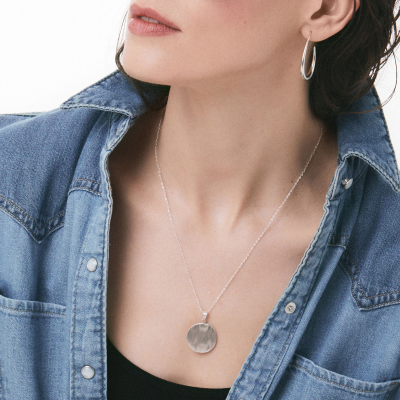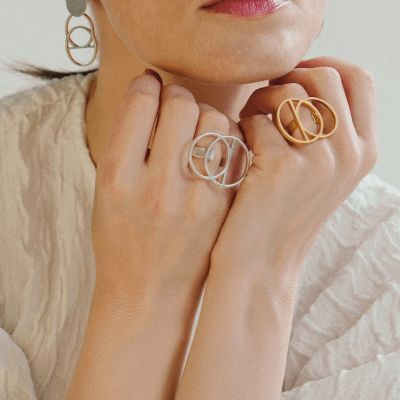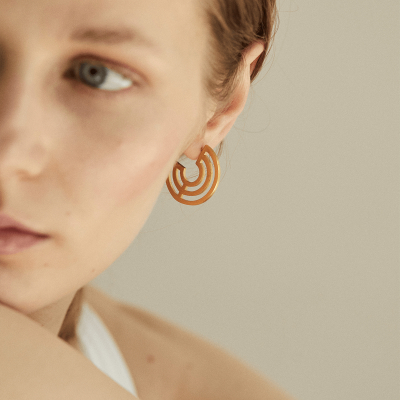- Andreea Leta
- 22899 views

For many it is as sophisticated as the black and white contrast, where for others it is a constant dilemma - gold and silver?
When the limits of fashion seem to be stretched to infinity, in times when the belt, bag and shoes no longer need to be perfectly matched, jewels, the details that give personality and shine to a look, are still a mystery almost as legendary as the art of transmuting metals. What are we to do when the two of the most precious materials in the world are in question, and you seem to like them just as much?
You don't need a complicated treat, just a bit of intuition and a few rules that you follow anyway when composing an outfit.
When and how to combine gold and silver:
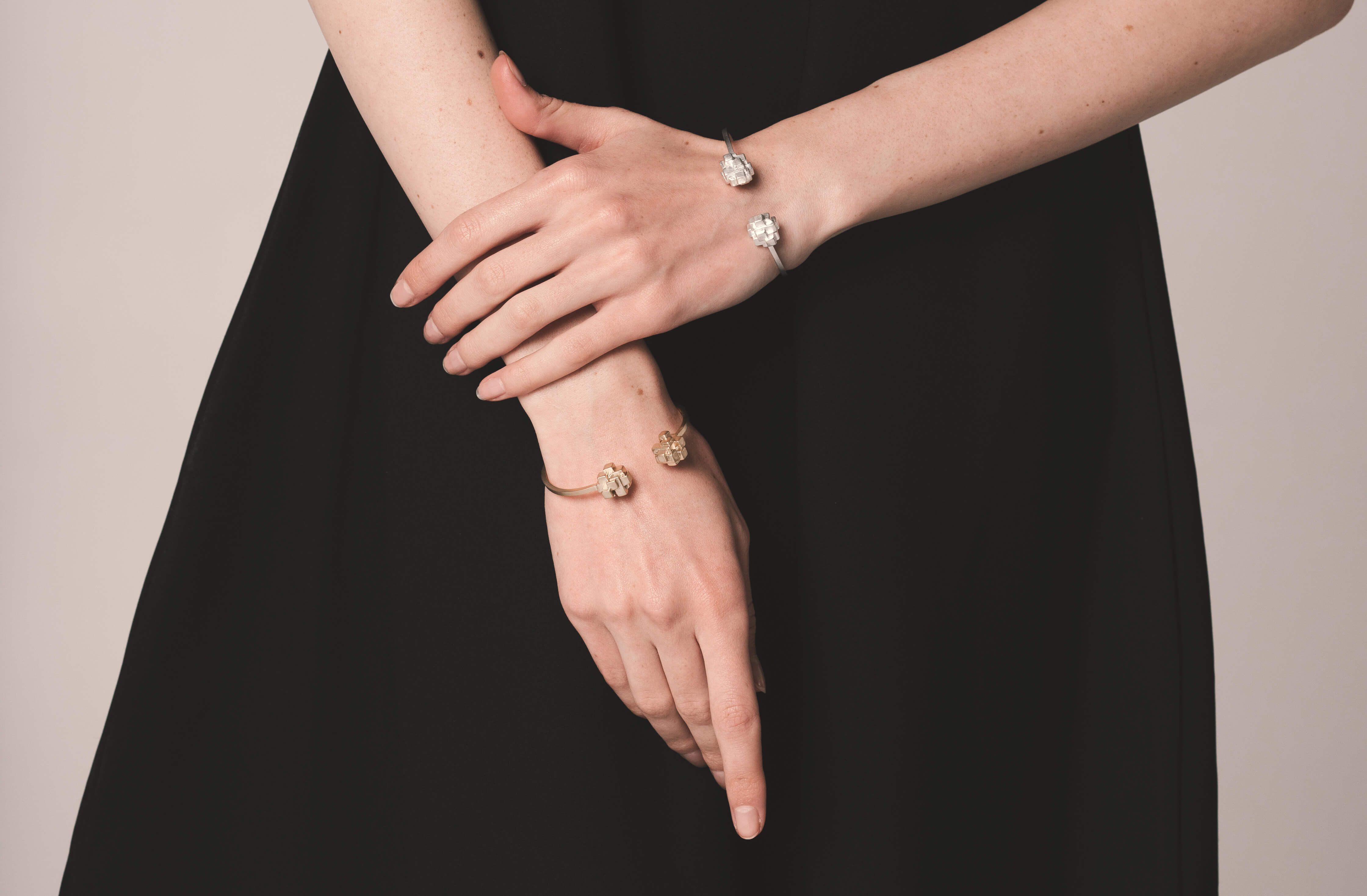
Minimalist jewelry seems to invite you to mix several pieces so as to illustrate your entire personality. This does not mean that you cannot wear a single piece of jewelry, remember that over the centuries, perfection has meant either a line or a circle, and today, the one who has the power to summarize complexity into a single shape, becomes an emblematic figure of knowledge. But until then, it's okay to combine gold and silver when, for example, you respect the shape of the pieces you have chosen. It is safest to rely on the same geometric figure or on lines of the same kind, straight or curved. If you choose a classic outfit, such as a men's suit, two gold and silver necklaces with the same shape, they will take it out of the patterns in a discreet manner, inviting others to an analysis of details that are characteristic of you. Usually, casual or smart casual outfits are the ones you feel the need to enrich with elements that take them out of the basic area.
You can choose different ring sizes as long as you stick to the same type of line and texture. The combination of a matte look and a light-reflecting piece is difficult in the case of jewelry, because you have to take into account all the other materials in the outfit, where it is even advisable to mix a matte texture with a glossy one. And to create a statement, you need very little, respectively two pieces with identical design, but made of different metals. You can combine two such bracelets or earrings, which you can wear even symbolically, expressing your masculine and feminine side, light and dark, just like in alchemy.
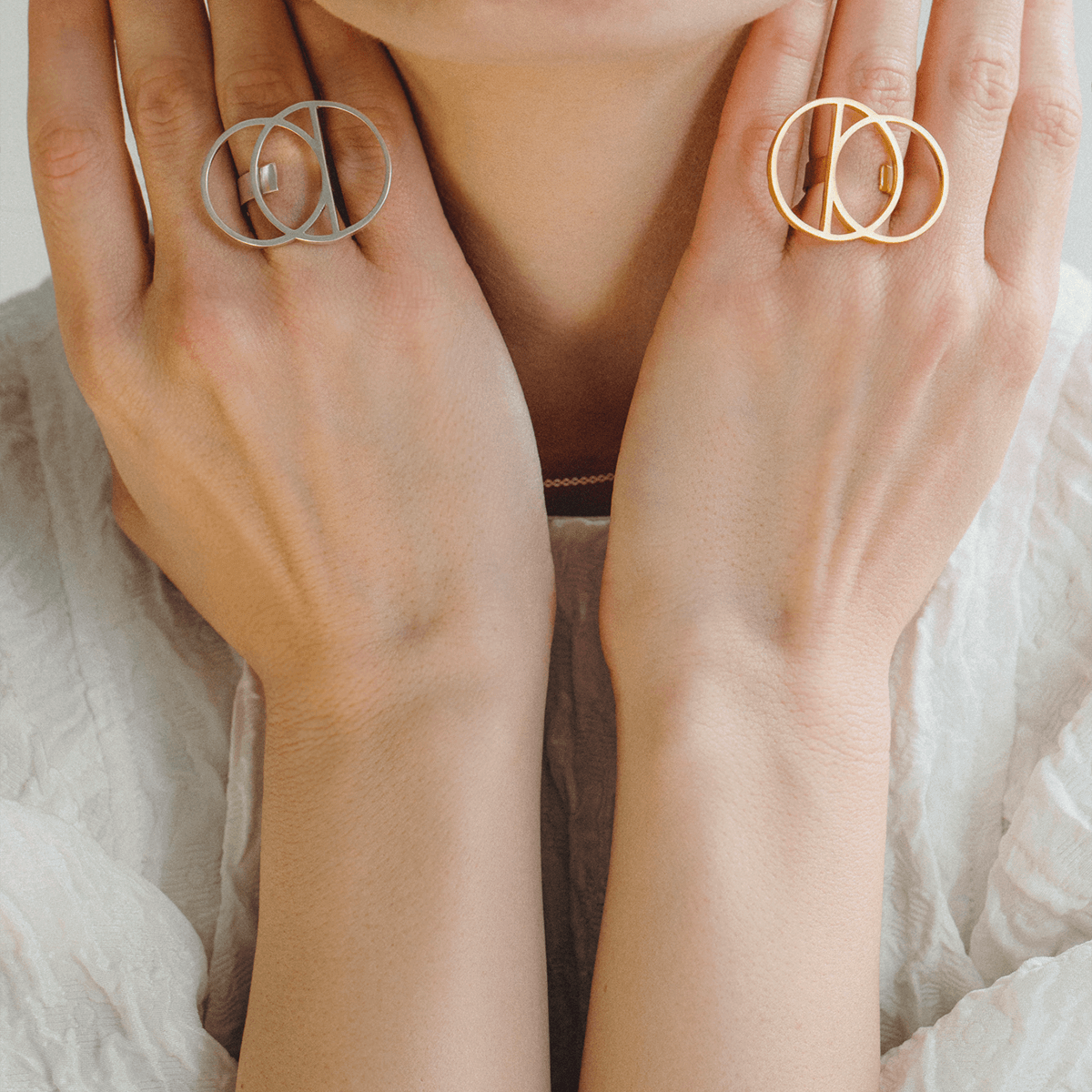
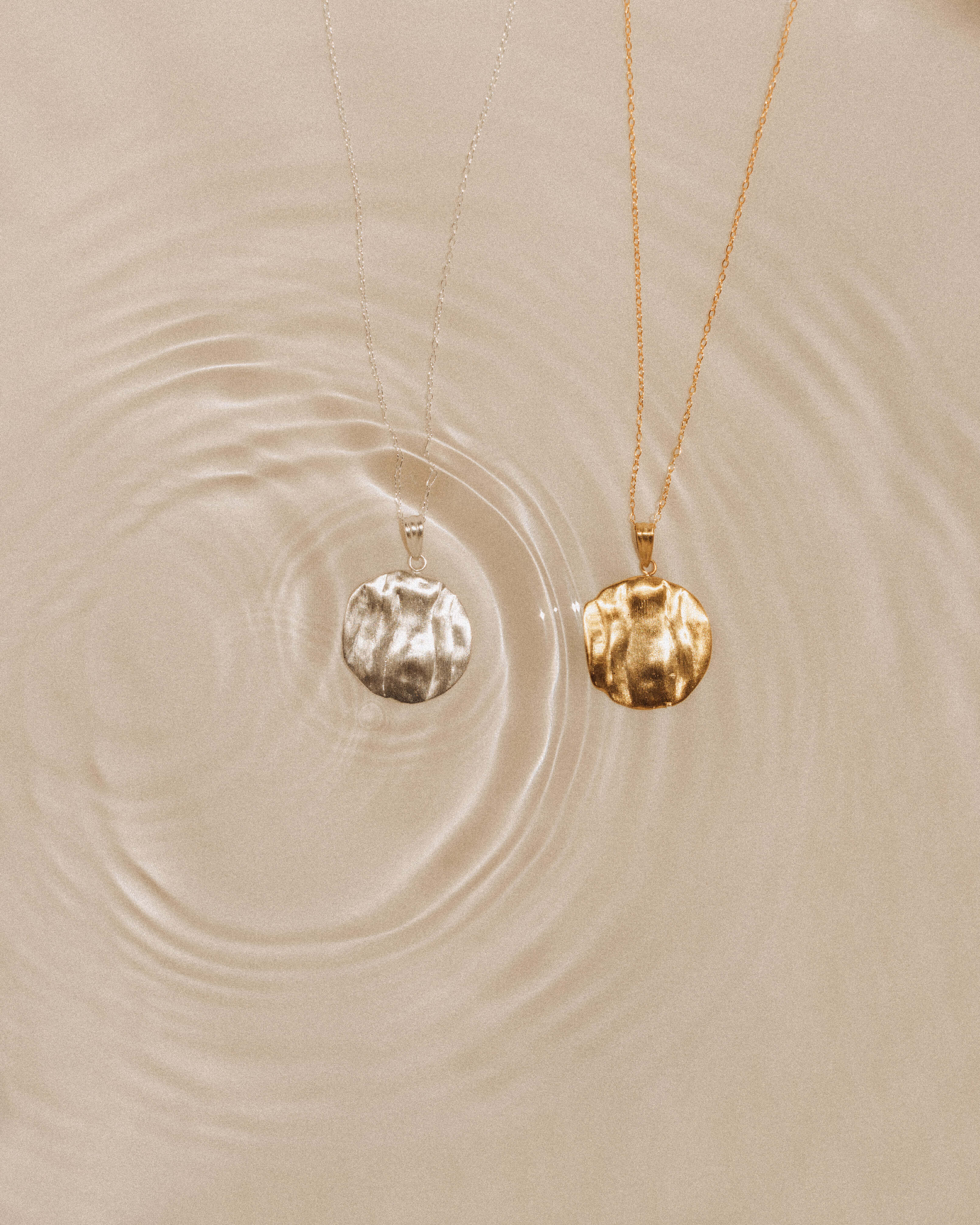
From a chromatic point of view, the combination of gold and silver is perfect for monochrome outfits, in neutral or non-colored shades, but you can also approach intense shades of red or blue, but you can also try to combine shades from the same range, such as beige and brown.
When and how not to combine gold and silver:
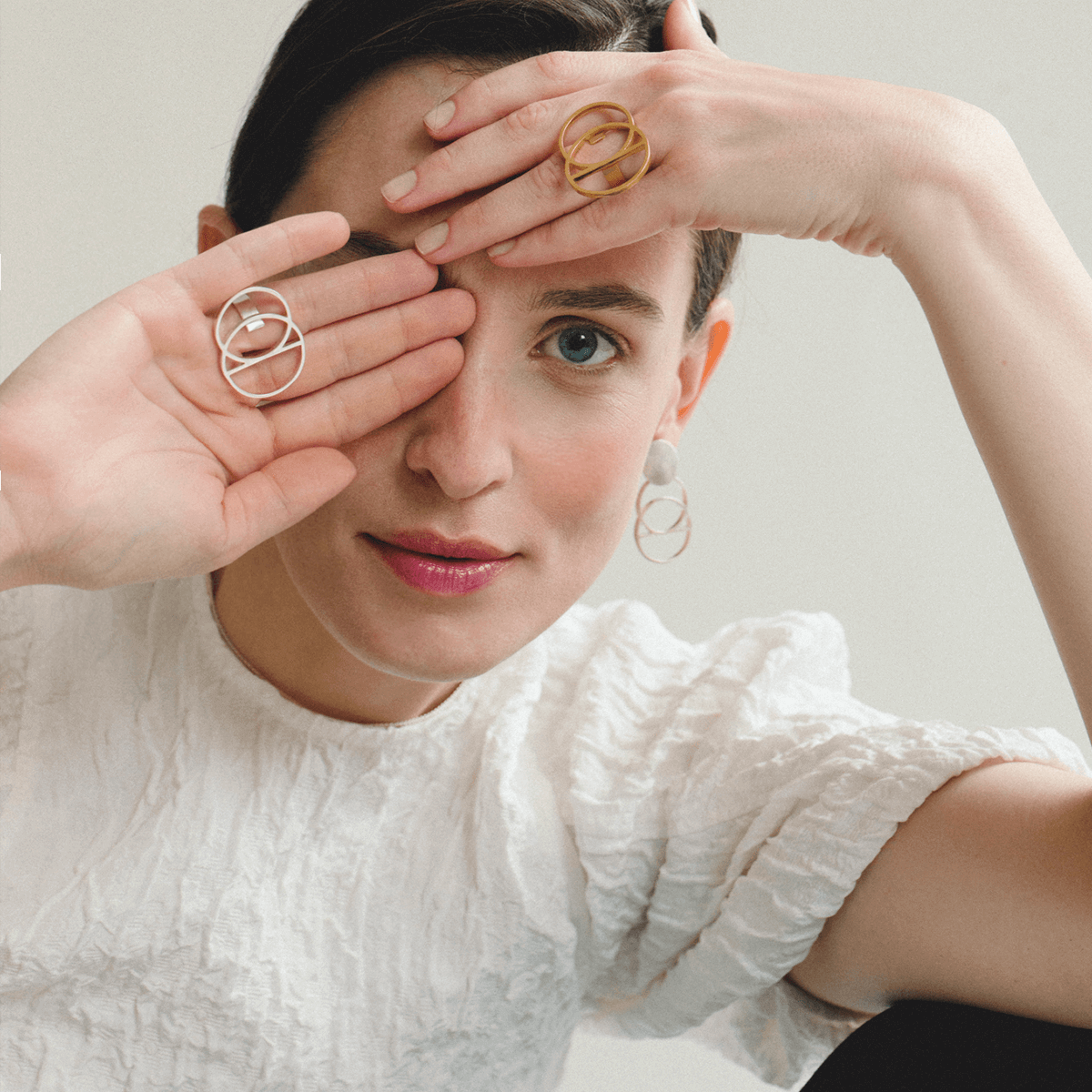
Chanel had a saying, "before you leave the house, look in the mirror again and give up an accessory." In the depths of her bourgeois soul, the one who invented trinkets was not a follower of minimalism, but she had a great sensitivity for good taste. Chanel would never have combined a natural pearl with a plastic one, just as we do not combine a piece of jewelry with a trinkets today, even when the copy is either very close to the original or it seems that no one would catch it, for one gives value to the other. Not to mention how hard the extremes are repelled when you wear a silver bracelet with an alloy ring that gives the impression of gold until the first hand wash. After all, we don't know if anyone has ever managed to turn any metal into gold, and that should make us think a little when choosing what pieces to wear, even when talking about jewelry with a minimalist design, which despite appearances, does not match anything.
And if we are talking about the bourgeoisie, there are some situations in which "less is more", no matter what a flamboyant icon like Diana Vreeland, Iris Apfel or Gloria Vanderbilt would say. In the case of a semi-formal outfit, rely on intuition: if you wear a black dress to a gala event, try to stay true to your favorite metal, be it gold or silver. You can choose oversized pieces, such as brooches in graphic lines, or a statement necklace with a shape that attracts all eyes anyway. This is one reason why, in red carpet looks, stylists usually opt for pieces that highlight the features of the wearer, while supporting the ensemble from the point of view of composition, without emphasizing the mastery of the specialist to mix several pieces.


